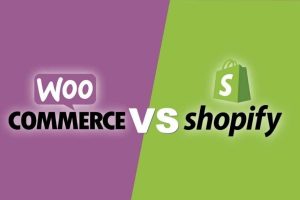Shopify is a well-known platform that makes it easier to start and run an e-commerce store on Shopify. Whether you’re a novice without coding skills, Shopify’s intuitive interface and extensive support ensure a quick setup for selling online. Wondering if it suits your needs? Let’s examine Shopify’s advantages and drawbacks to assist your decision.
The Good Stuff: Why Shopify Shines
Easy to Use: Shopify’s drag-and-drop interface makes building your store intuitive. No coding knowledge is required! You can easily add products, manage inventory, and customize your storefront without needing any technical expertise.
All-in-One Solution: Shopify takes care of everything from hosting to security, so you don’t have to worry about server maintenance or complex software installations. They also handle payments securely, giving you peace of mind.
Scalability: Whether you’re just starting out or your business is booming, Shopify can grow with you. They offer different pricing plans with features to suit your needs, so you can upgrade as your business scales.
App Store Extravaganza: Shopify’s app store boasts a huge selection of apps (both free and paid) that can add all sorts of functionalities to your store. From marketing and shipping to accounting and loyalty programmes, there’s an app to help you with almost anything.
Benefits Beyond Sales: Shopify goes beyond just processing orders. They offer built-in SEO tools to help your store rank higher in search engines and built-in marketing features to help you reach new customers.
Not So Perfect: Shopify’s Shortcomings

Transaction Fees: While Shopify offers its payment processing system (Shopify Payments), using it avoids additional transaction fees on most plans. If you choose a third-party payment processor, you’ll incur transaction fees on every sale.
Limited Design Customization: While Shopify offers a variety of themes, extensive design customisation can be tricky. If you have a very specific vision for your store’s look and feel, you might find Shopify’s options a bit limiting. There are workarounds involving code editing, but that requires some technical knowledge.
App Dependence: While the app store is a great resource, some functionalities crucial for your store might require paid apps. This can add up over time and affect your overall costs.
How to Use Shopify: Getting Started is Simple
Sign Up and Choose a Plan: Shopify offers a free trial, so you can explore the platform before committing. Choose a plan that suits your needs and budget.
Design Your Storefront: Pick a theme that reflects your brand and customize it to your liking. You can add your logo, product images, and descriptions.
Add Products: Enter product details, set prices, manage inventory, and add high-quality photos.
Configure Settings: Set up your payment processing, shipping options, and taxes.
Launch Your Store: Once everything is set up and you’re happy with the look and feel, hit publish and watch your online store come to life!
Is Shopify right for you?
Shopify is an excellent option for both new and established businesses. It provides an easy-to-use platform with a vast range of features and the ability to scale as your business grows. However, if you require complete design freedom or have a tight budget, it’s advisable to explore other options. The best way to determine whether Shopify is the right fit for you is to take advantage of their free trial. You can experiment with the platform and determine if it meets your specific requirements.
Ultimately, the best way to know if Shopify is right for you is to try it out. With their free trial, you can experiment with the platform and see if it fits your needs.


